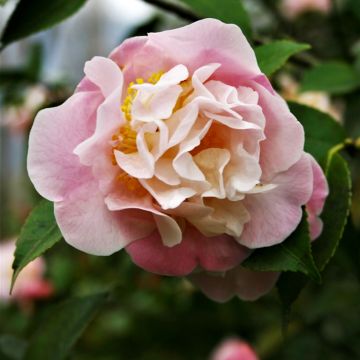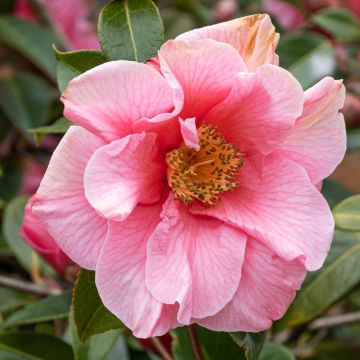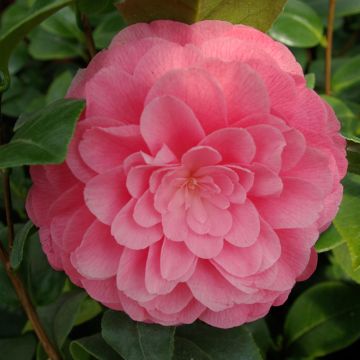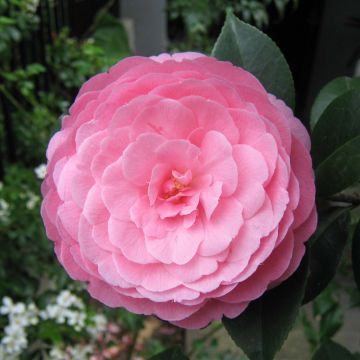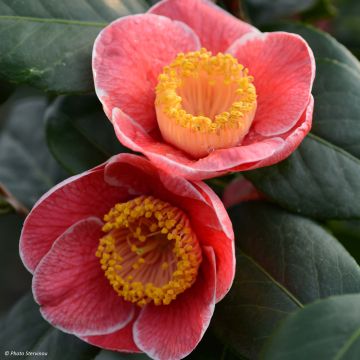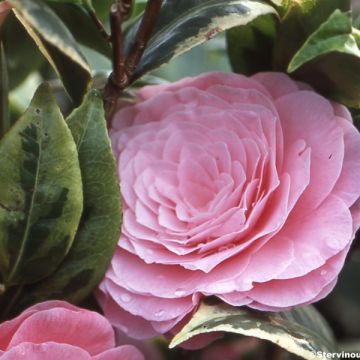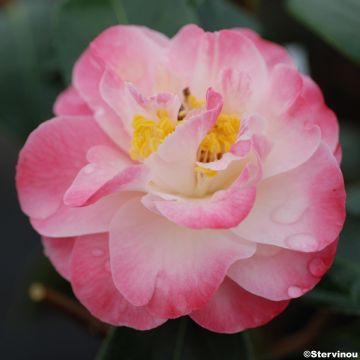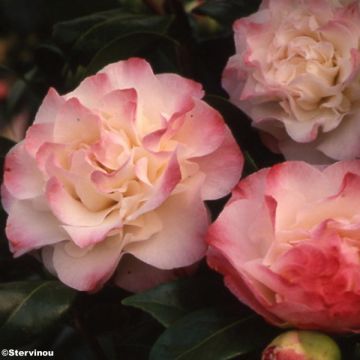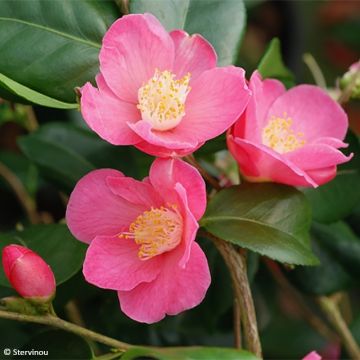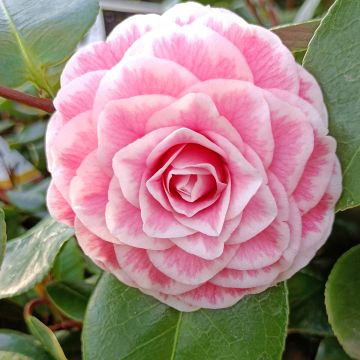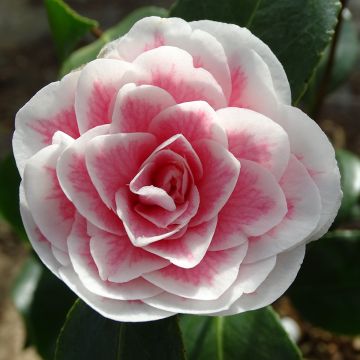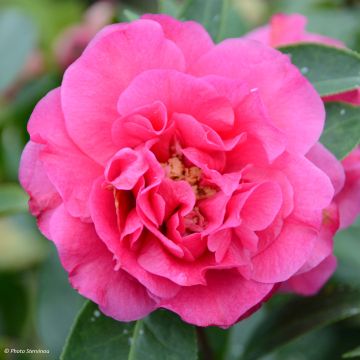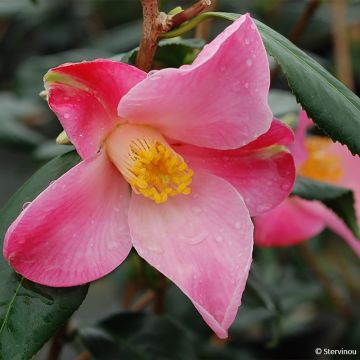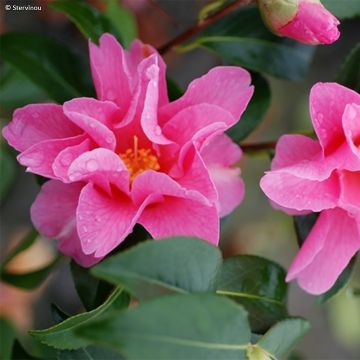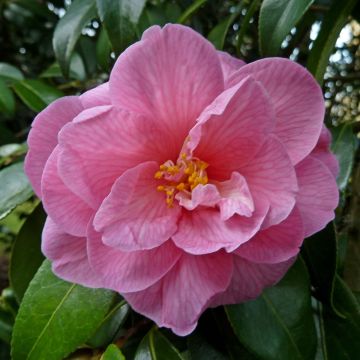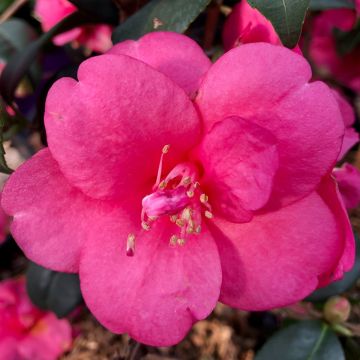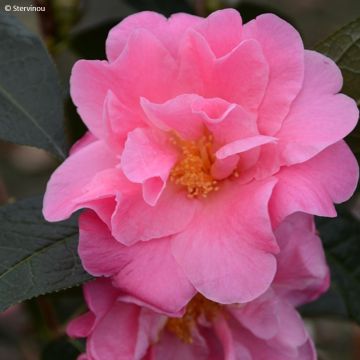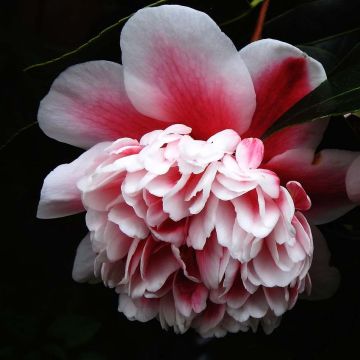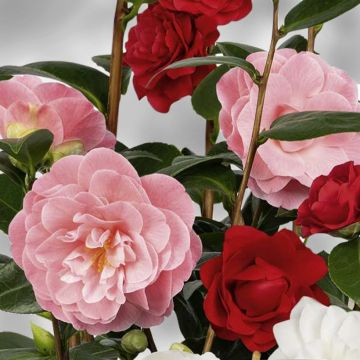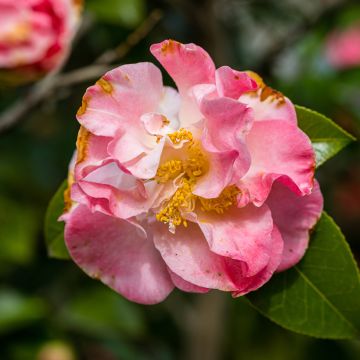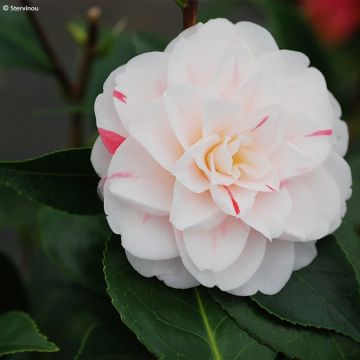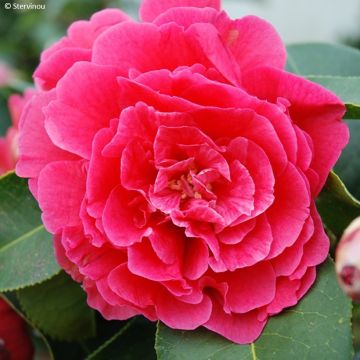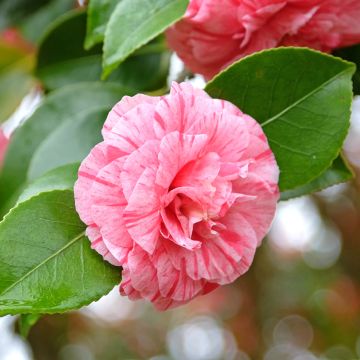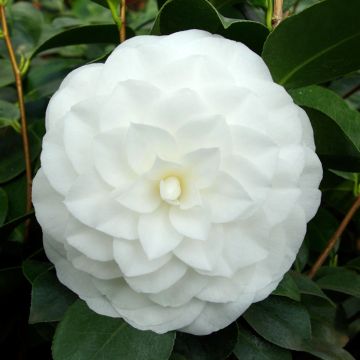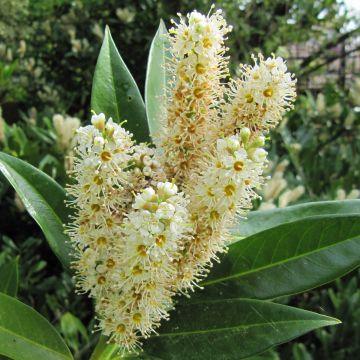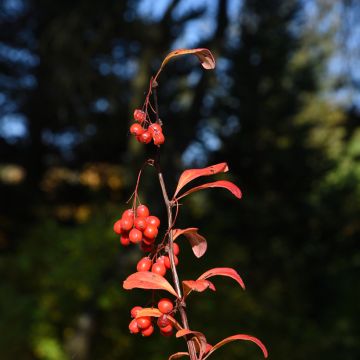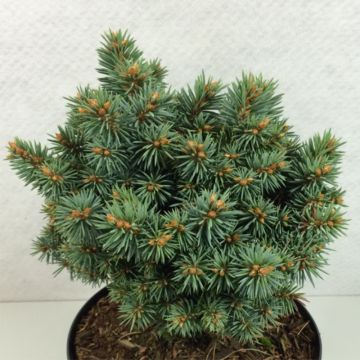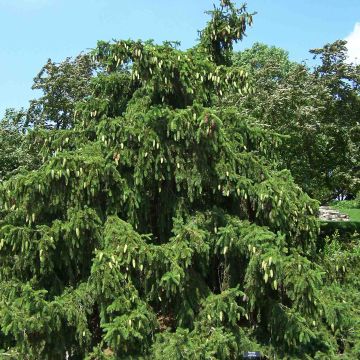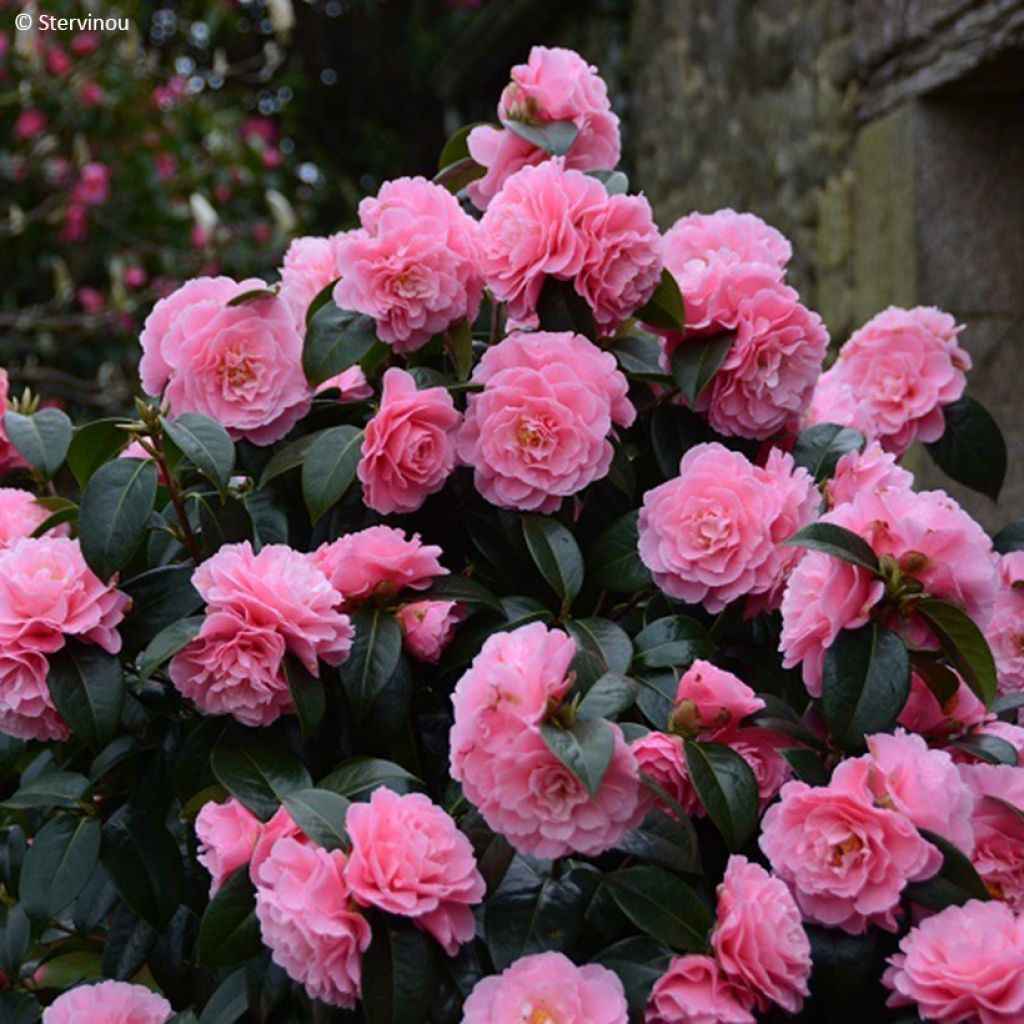

Camellia x reticulata Lovely Lady
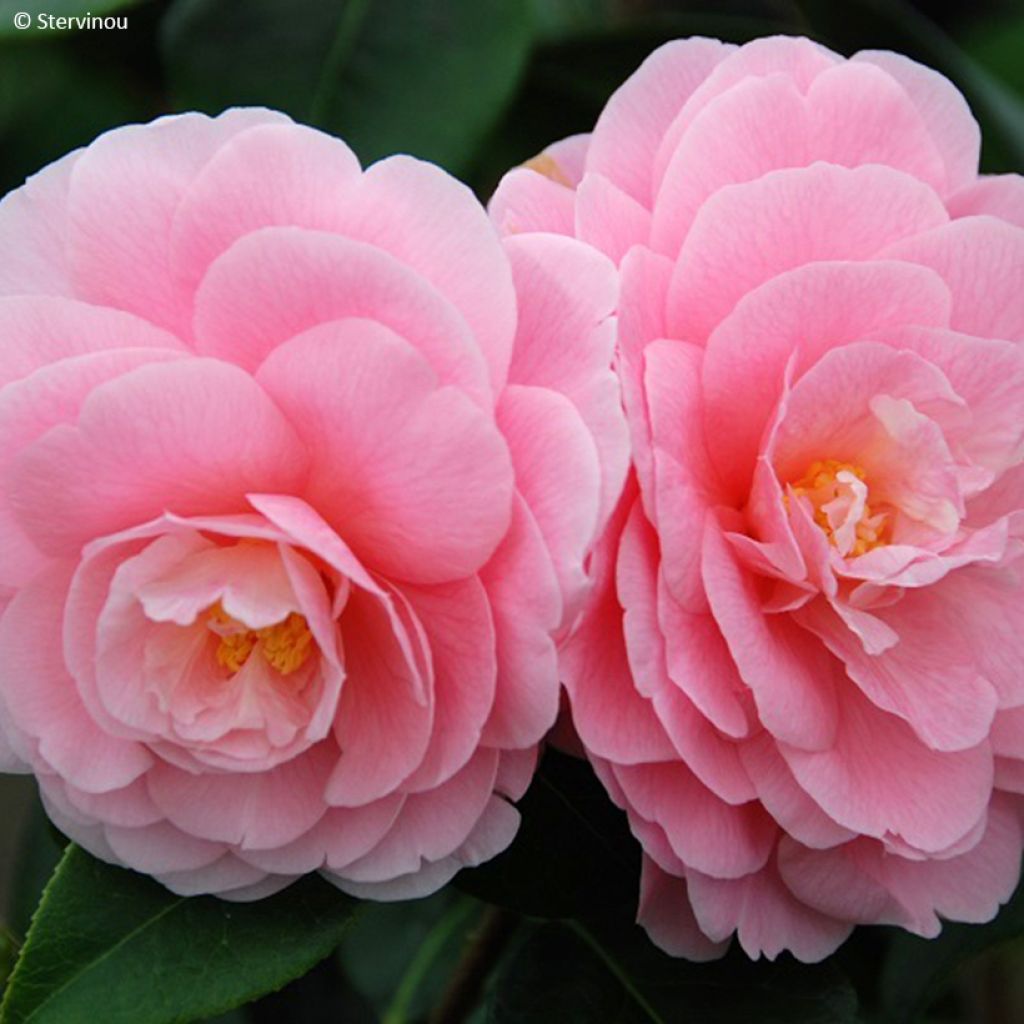

Camellia x reticulata Lovely Lady
Camellia x reticulata Lovely Lady
Camellia x reticulata Lovely Lady
Why not try an alternative variety in stock?
View all →This plant carries a 24 months recovery warranty
More information
We guarantee the quality of our plants for a full growing cycle, and will replace at our expense any plant that fails to recover under normal climatic and planting conditions.
From €5.90 for pickup delivery and €6.90 for home delivery
Express home delivery from €8.90.
Does this plant fit my garden?
Set up your Plantfit profile →
Description
The Camellia reticulata 'Lovely Lady' truly lives up to its name, as its flowering is undoubtedly one of the most beautiful in its genus. This variety produces large flowers with numerous petals in late winter, forming very full corollas with a highly graphic aesthetic. Emitted abundantly, the pearly pink flowers visually stand out against the dark green background, attracting all eyes in the garden at this time of year. Their romantic charm heralds spring in the most delightful way. With a somewhat limited hardiness, this Camellia will thrive in cool oceanic climates, with not too cold winters. It requires a slightly acidic soil, moist enough while being well-drained, and a semi-shaded exposure.
The Camellia belongs to the Theaceae family, to which it confers high cultural and economic importance through the Camellia sinensis species, whose leaves are used to produce tea. This small plant family consists of only about ten genera, some ornamental like the Stewartia pseudocamellia, relatively unknown but very ornamental with its flowers resembling those of certain Camellias, its superb autumnal colours, and decorative bark. According to botanical classifications, there are between 100 and 250 Camellia species, the most well-known being C. japonica, imported to England in 1739 and highly fashionable in the first half of the 19th century. The Camellia reticulata, on the other hand, is appreciated for its flowers, the largest in its genus. It is found naturally in the Yunnan province (south of China), in a humid subtropical climate. It grows in mountainous areas up to an altitude of 3000 m, and can form a small tree of 10 m in height or more.
The Camellia 'Lovely Lady' will exhibit a much more modest development in our regions. This variety is attributed to the Australian breeder Edgar R. Sebire, from Wanding North (near Melbourne). Between 1969 and 1989, this enthusiast registered over 60 new varieties of his favourite bush, including hybrids of C. japonica, C. reticulata, C. sasanqua (Autumn Camellias), C. saluensis, and others... Most were what are called "lucky seedlings," meaning young plants selected for their differences (mutation or other) within a seedling. 'Lovely Lady' is a fine example of this, originating from an initial seedling of C. reticulata 'Pink Sparkle', an American variety with very large semi-double pink flowers (14 cm in diameter). The first plant bloomed in 1979 and this new variety was registered two years later for market release.
'Lovely Lady' forms a medium-sized bush, with an upright habit and very dense vegetation. A plant generally reaches approximately 1.40 m in height and 1.10 m in width after 10 years of cultivation in our climates, but New Zealand nurserymen report larger dimensions in their latitudes, around 3 m in height and 2.5 m in spread. The numerous branches with brown bark bear elongated elliptical leaves, measuring 12 cm in length and 5 cm in width, carried by short petioles. Finely toothed on the edges, the leaves are a very dark green, with a glossy, almost shiny surface. Evergreen, they are ornamental throughout the seasons and beautifully complement the flowering period, which occurs between February and April. Very abundant, the flowers have an impressive diameter of up to 12 cm, and their beautiful pearly pink hue contrasts superbly against the dark foliage. Very double, the corollas consist of approximately 70 petals, which almost manage, by their number, to conceal the yellow stamen core. The flowers are absolutely stunning, rivalling the most beautiful roses, visually at least since they are devoid of fragrance.
The Camellia 'Lovely Lady' deserves its place in Atlantic coastal regions, in acidic, humus-bearing, well-drained soil. Plant it at the edge of trees to protect it from the sun, and accompany it with other ornamental plants with similar needs to create a superb flowering massif. The Magnolia laevifolia 'Achteraan' with its dark green foliage will take over from your Camellia with its fragrant creamy white flowers blooming in April and May. To create a foliage contrast, plant in the foreground of your massif a Pieris japonica 'Little Heath' with lanceolate leaves of a lighter green edged with white, and whose young shoots emerge in pink hues in spring. Much larger, the Rhododendron ponticum 'Variegatum' also offers very beautiful white variegated foliage, coupled with a bountiful mauve flowering in May-June. Place it in the background, alongside a Acer palmatum 'Trompenburg', a superb Japanese Maple with deeply cut foliage ranging from bright red to purple depending on the seasons, thus creating a scene of high ornamental quality.
Report an error about the product description
Plant habit
Flowering
Foliage
Botanical data
Camellia
x reticulata
Lovely Lady
Theaceae
Cultivar or hybrid
Other Traditional Camellia
Planting and care
The Camellia reticulata 'Lovely Lady' thrives in full sun in suitable climates, such as in Atlantic regions, but it is in partial shade, protected from scorching sun and sheltered from strong winds, that it will truly excel. Plant it in a cool, humus-bearing, acidic, and well-drained soil. Avoid planting the bush too deeply; the top of the root ball should be covered by 3 cm. In winter, cover it with a 5 to 7 cm thick mulch composed of leaf compost and crushed bark. Beware of late frosts that can damage the flowers and buds. During dry periods, water the bush to prevent the dropping of flower buds. It is advisable to plant the camellia preferably in autumn to promote proper rooting and better flowering from the first year. Possible diseases include chlorosis caused by excess limestone, brown spots caused by burns on leaves exposed to southern sun, sooty mould, scale insects, and vine-plant weevils.
Pruning is not necessary and should only be done if required just after flowering, before the emergence of new spring shoots, and sparingly. Most camellia hybrids do not recover from overly severe pruning.
Planting period
Intended location
Care
This item has not been reviewed yet - be the first to leave a review about it.
Evergreen shrubs
Haven't found what you were looking for?
Hardiness is the lowest winter temperature a plant can endure without suffering serious damage or even dying. However, hardiness is affected by location (a sheltered area, such as a patio), protection (winter cover) and soil type (hardiness is improved by well-drained soil).

Photo Sharing Terms & Conditions
In order to encourage gardeners to interact and share their experiences, Promesse de fleurs offers various media enabling content to be uploaded onto its Site - in particular via the ‘Photo sharing’ module.
The User agrees to refrain from:
- Posting any content that is illegal, prejudicial, insulting, racist, inciteful to hatred, revisionist, contrary to public decency, that infringes on privacy or on the privacy rights of third parties, in particular the publicity rights of persons and goods, intellectual property rights, or the right to privacy.
- Submitting content on behalf of a third party;
- Impersonate the identity of a third party and/or publish any personal information about a third party;
In general, the User undertakes to refrain from any unethical behaviour.
All Content (in particular text, comments, files, images, photos, videos, creative works, etc.), which may be subject to property or intellectual property rights, image or other private rights, shall remain the property of the User, subject to the limited rights granted by the terms of the licence granted by Promesse de fleurs as stated below. Users are at liberty to publish or not to publish such Content on the Site, notably via the ‘Photo Sharing’ facility, and accept that this Content shall be made public and freely accessible, notably on the Internet.
Users further acknowledge, undertake to have ,and guarantee that they hold all necessary rights and permissions to publish such material on the Site, in particular with regard to the legislation in force pertaining to any privacy, property, intellectual property, image, or contractual rights, or rights of any other nature. By publishing such Content on the Site, Users acknowledge accepting full liability as publishers of the Content within the meaning of the law, and grant Promesse de fleurs, free of charge, an inclusive, worldwide licence for the said Content for the entire duration of its publication, including all reproduction, representation, up/downloading, displaying, performing, transmission, and storage rights.
Users also grant permission for their name to be linked to the Content and accept that this link may not always be made available.
By engaging in posting material, Users consent to their Content becoming automatically accessible on the Internet, in particular on other sites and/or blogs and/or web pages of the Promesse de fleurs site, including in particular social pages and the Promesse de fleurs catalogue.
Users may secure the removal of entrusted content free of charge by issuing a simple request via our contact form.
The flowering period indicated on our website applies to countries and regions located in USDA zone 8 (France, the United Kingdom, Ireland, the Netherlands, etc.)
It will vary according to where you live:
- In zones 9 to 10 (Italy, Spain, Greece, etc.), flowering will occur about 2 to 4 weeks earlier.
- In zones 6 to 7 (Germany, Poland, Slovenia, and lower mountainous regions), flowering will be delayed by 2 to 3 weeks.
- In zone 5 (Central Europe, Scandinavia), blooming will be delayed by 3 to 5 weeks.
In temperate climates, pruning of spring-flowering shrubs (forsythia, spireas, etc.) should be done just after flowering.
Pruning of summer-flowering shrubs (Indian Lilac, Perovskia, etc.) can be done in winter or spring.
In cold regions as well as with frost-sensitive plants, avoid pruning too early when severe frosts may still occur.
The planting period indicated on our website applies to countries and regions located in USDA zone 8 (France, United Kingdom, Ireland, Netherlands).
It will vary according to where you live:
- In Mediterranean zones (Marseille, Madrid, Milan, etc.), autumn and winter are the best planting periods.
- In continental zones (Strasbourg, Munich, Vienna, etc.), delay planting by 2 to 3 weeks in spring and bring it forward by 2 to 4 weeks in autumn.
- In mountainous regions (the Alps, Pyrenees, Carpathians, etc.), it is best to plant in late spring (May-June) or late summer (August-September).
The harvesting period indicated on our website applies to countries and regions in USDA zone 8 (France, England, Ireland, the Netherlands).
In colder areas (Scandinavia, Poland, Austria...) fruit and vegetable harvests are likely to be delayed by 3-4 weeks.
In warmer areas (Italy, Spain, Greece, etc.), harvesting will probably take place earlier, depending on weather conditions.
The sowing periods indicated on our website apply to countries and regions within USDA Zone 8 (France, UK, Ireland, Netherlands).
In colder areas (Scandinavia, Poland, Austria...), delay any outdoor sowing by 3-4 weeks, or sow under glass.
In warmer climes (Italy, Spain, Greece, etc.), bring outdoor sowing forward by a few weeks.

































